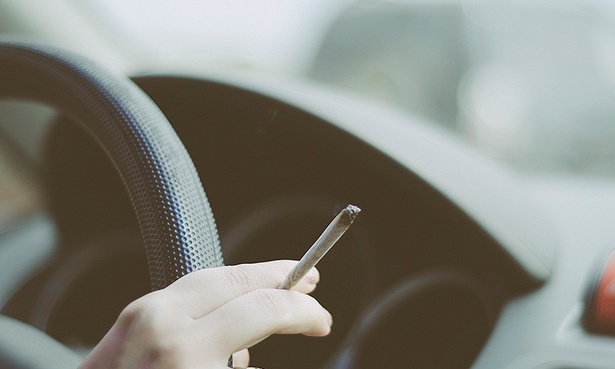
A new study by the National Institute of Drug Abuse has found that alcohol impairs driving far more than marijuana.
The study examined 19 “occasional cannabis consumers” (13 men, 6 women), who stated they had used marijuana at least once in the past month but no more often than 3 days a week. The test subjects took a 45 minute driving simulator test after vaporising marijuana, drinking alcohol, or taking a placebo. The test was partly designed to measure how many times the car left the lane, weaving in the lane, and the speed of the car.
The researchers concluded that “alcohol significantly increased lane departures/minimum and maximum lateral acceleration; these measures were not sensitive to cannabis”, “alcohol, but not marijuana, increased the number of times the car actually left the lane and the speed of the weaving”, and “stoned drivers may attempt to drive more cautiously to compensate for impairing effects, whereas alcohol-influenced drivers often underestimate their impairment and take more risk”.
The recently released study indicates that marijuana at levels can affect driving, with a reduction in peripheral vision noted as a main affected measure. The THC level in the blood higher than 13.1 nano-grams per milliliter of blood had an impact on weaving similar to blood alcohol concentration of 0.08 percent, the threshold for impaired driving in many states.
This new study also presented the challenges in accurately and timely measuring the level of THC in testing drivers and developing a threshold of what’s considered too high to drive. At present, the most accurate test for THC is a blood test, but as the researchers noted, “THC concentrations drop rapidly during the time required to collect a blood specimen in the U.S., generally within two to four hours.” An oral roadside saliva test is available but is currently not precise enough to use for legal purposes.
Researchers added that the implementing concentration-based cannabis-driving legislation “will unfairly target individuals not acutely intoxicated, because residual THC can be detected in blood for up to a month of sustained abstinence in chronic frequent smokers”.
The National Institute on Drug Abuse, the Office on National Drug Control Policy, and federal safety regulator, the National Highway Traffic Safety Administration funded the study.
Now that the federal government has started taking a good look at the effects of cannabis, this testing should lead to a more immediate declassification of cannabis as a Schedule 1 substance.
Dan Riffle, director of federal policies for the Marijuana Policy Project – America’s largest marijuana policy organization responsible for changing most state-level marijuana laws since 2000, recently pressed federal officials to eliminate political barriers preventing research on the potential medical benefits of marijuana.
“The Drug Enforcement Administration (DEA) is waging an irrational war on marijuana that is costing people their lives. They are standing in the way of research and the development of potentially life-saving medications. While the DEA is clinging to reefer madness, there are seriously ill people clinging to their lives who could be benefiting from medical marijuana. The DEA is preventing children with seizure disorders and people suffering from diseases like cancer and AIDS from accessing a medication that their doctors recommend and could dramatically improve the quality of their lives.
“When President Obama took office, he mandated that policy making in his administration be guided by evidence and the scientific process rather than politics and ideology. Clearly, the DEA didn’t get the memo. It’s absurd that marijuana is still classified as a Schedule I drug with ‘no accepted medical use’. Scientists need to be able to do the important work of developing marijuana-based medicines and putting them through the FDA’s approval process. Marijuana is far less harmful than alcohol, and like alcohol it should not be included in federal drug schedules,” he said.
This Article (Federal Study Concludes Marijuana Is Safer Than Alcohol While Driving) is free and open source. You have permission to republish this article under a Creative Commons license with attribution to the author and AnonHQ.com.




